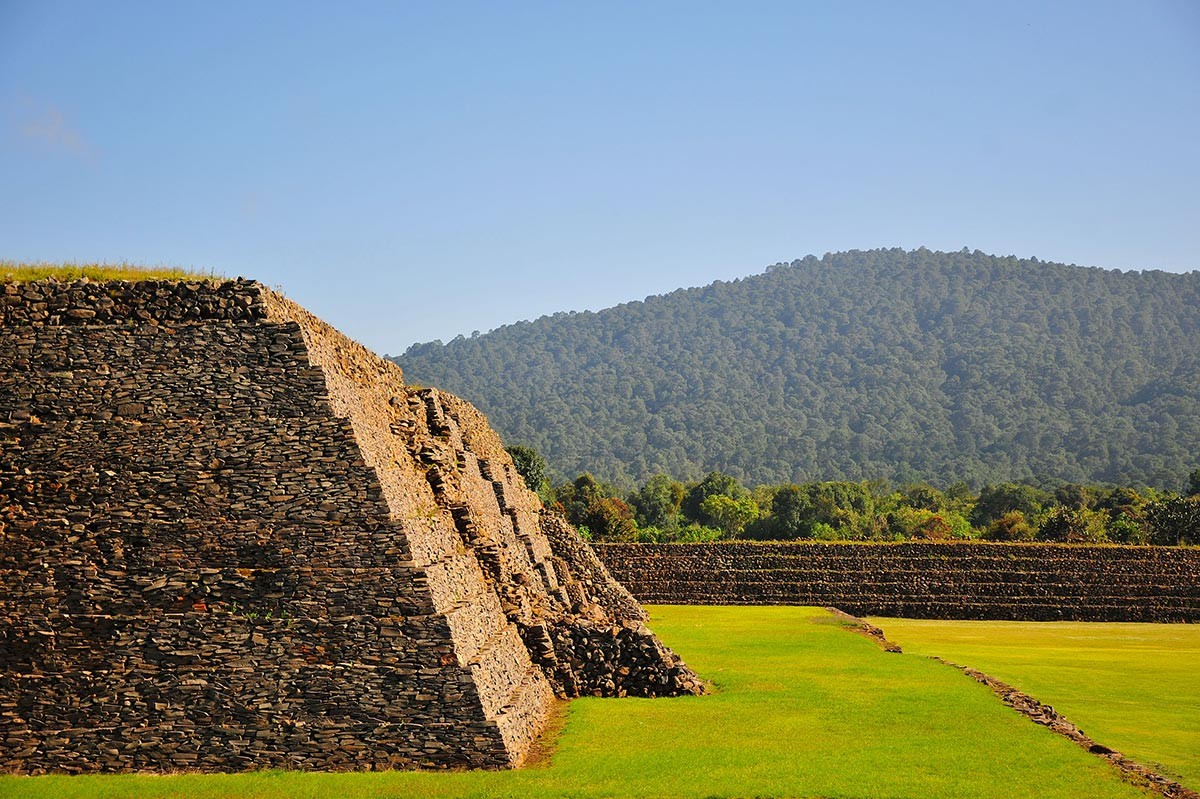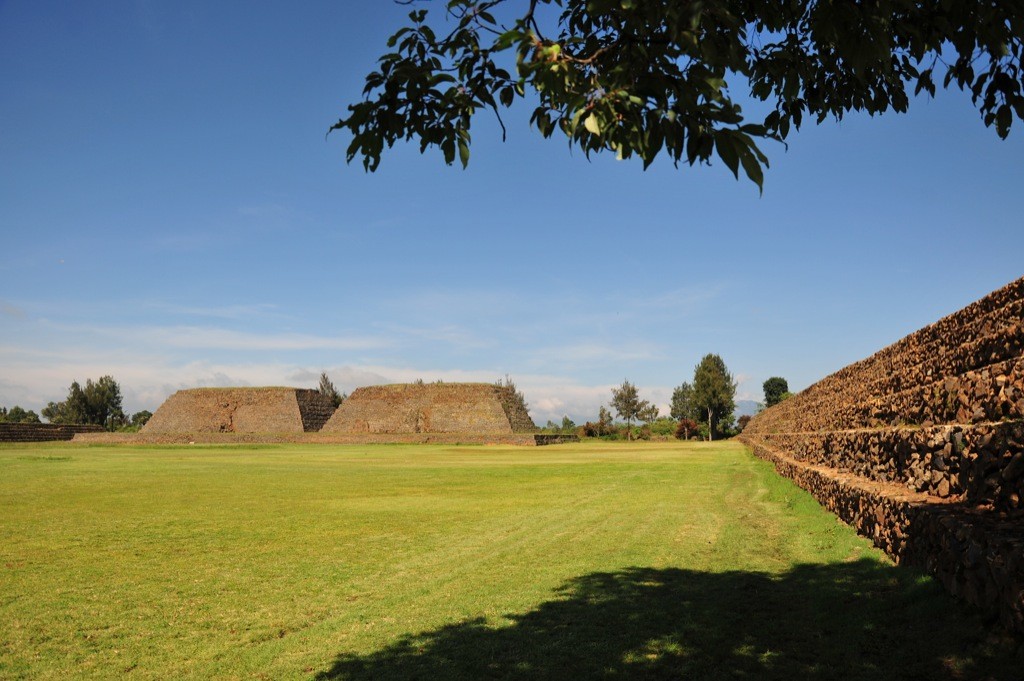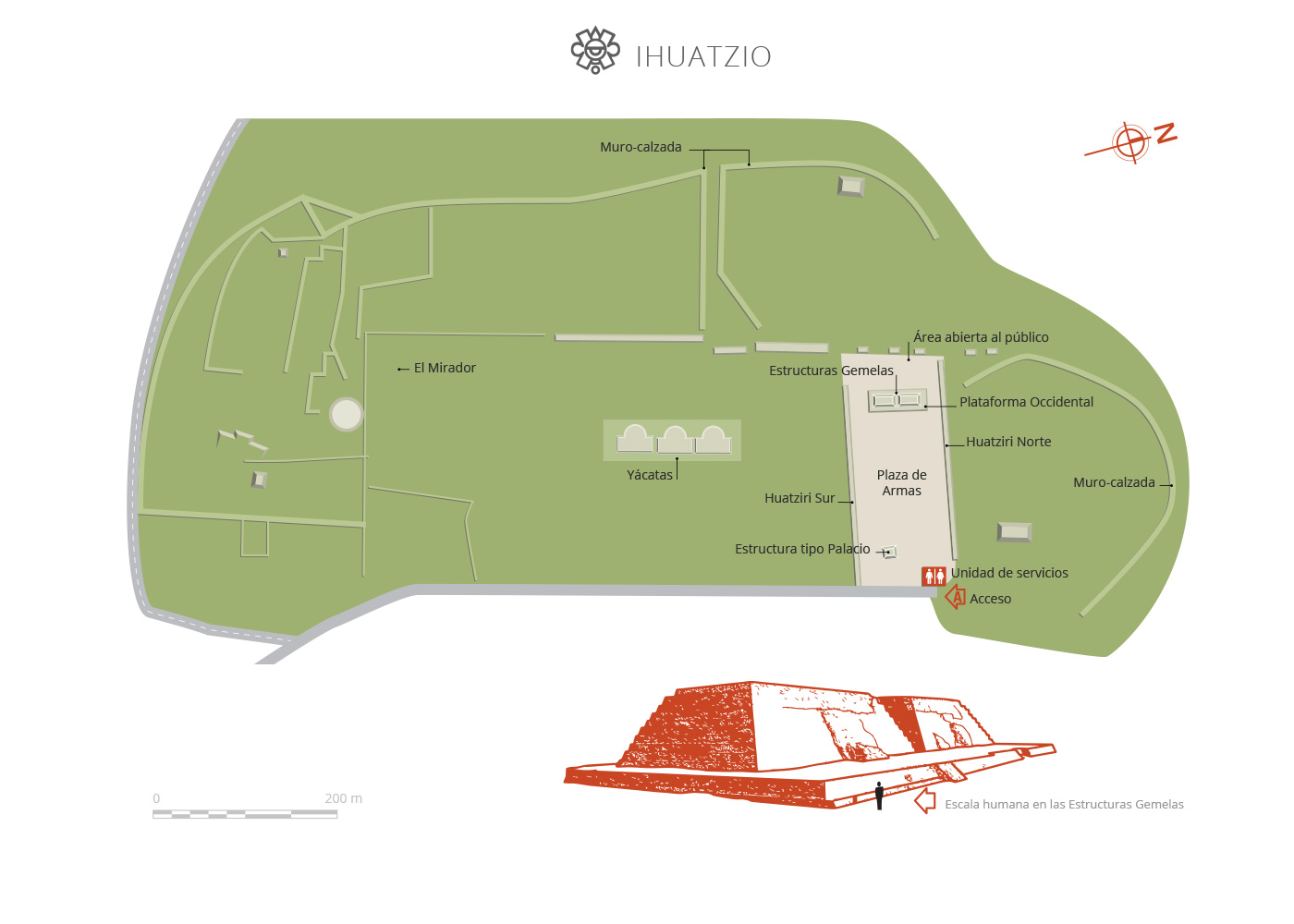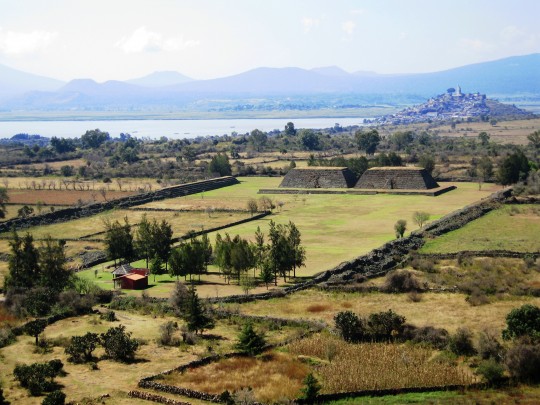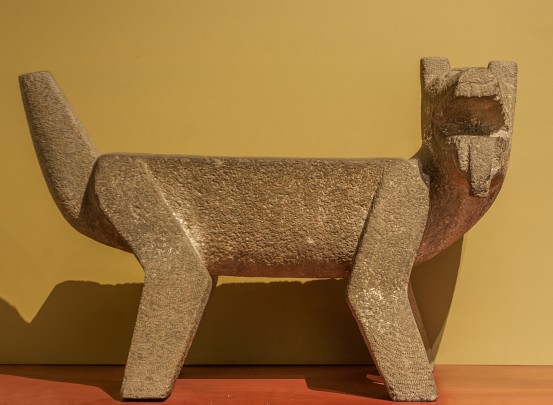Ihuatzio
The house of the coyotes
Together with Pátzcuaro and Tzintzuntzan, Ihuatzio was once a seat of the mighty Purépecha state. This extensive site has only been partially explored. The huatziri or elevated walkways and the Plaza de Armas, with two semi-circular pyramids called yacatas, are particularly impressive.
About the site
This archeological site stands out for its unique architectural features such as the huatziri, elevated paths that delimited different spaces and provided a route into the city. Another notable characteristic is the much larger central area than found in the other settlements around Pátzcuaro Lake. It is the only one of the three seats of the Purépecha state to contain monumental sculptures. In 1908 three sculptures were unearthed, two Chac Mools and one coyote. One year later, the first official excavation of the site was led by architect Ignacio Marquina; a total of four Chac Mools and three coyote sculptures, carved in volcanic rock, were discovered during the archeological digs.
Nahua groups, influenced by Toltec culture, lived on the islands and on the shores of Pátzcuaro Lake and were the first occupants of the site, until the arrival of the Purépecha. In its heyday, Ihuatzio covered an area of about 150 hectares, and archeologists have identified 84 structures—only seven of which have been exposed. These are all accessible to the public.
The Purépecha groups that began to arrive in large numbers in the valley around Pátzcuaro Lake became dominant and gradually came to exercise control over the entire region. Ihuatzio, along with Pátzcuaro and Tzintzuntzan, would be the three main seats of power of a vast empire that spanned much of today’s state of Michoacán as well as parts of Jalisco, Guanajuato and Guerrero (longitudinally demarcated by the Balsas and Lerma rivers).
Ihuatzio was the first seat of the Purépecha state, and it later flourished to acquire great power through the conquest or subjugation of smaller communities. At the time of the Spaniards’ arrival, this group was engaged in conflicts with the Mexica.
The most outstanding structures on the site include the huatziri, elongated walls-cum-walkways that featured stepped structures on every side, and were wide enough for people to walk on them in both directions. In the eastern section of the huatziri, on the south side of the Plaza de Armas, steps provide access to the top of these huatziri walls, from where visitors can fully appreciate this construction.
Nahua groups, influenced by Toltec culture, lived on the islands and on the shores of Pátzcuaro Lake and were the first occupants of the site, until the arrival of the Purépecha. In its heyday, Ihuatzio covered an area of about 150 hectares, and archeologists have identified 84 structures—only seven of which have been exposed. These are all accessible to the public.
The Purépecha groups that began to arrive in large numbers in the valley around Pátzcuaro Lake became dominant and gradually came to exercise control over the entire region. Ihuatzio, along with Pátzcuaro and Tzintzuntzan, would be the three main seats of power of a vast empire that spanned much of today’s state of Michoacán as well as parts of Jalisco, Guanajuato and Guerrero (longitudinally demarcated by the Balsas and Lerma rivers).
Ihuatzio was the first seat of the Purépecha state, and it later flourished to acquire great power through the conquest or subjugation of smaller communities. At the time of the Spaniards’ arrival, this group was engaged in conflicts with the Mexica.
The most outstanding structures on the site include the huatziri, elongated walls-cum-walkways that featured stepped structures on every side, and were wide enough for people to walk on them in both directions. In the eastern section of the huatziri, on the south side of the Plaza de Armas, steps provide access to the top of these huatziri walls, from where visitors can fully appreciate this construction.
Map
Did you know...
- It is believed that the Purépecha guarded their treasures in Ihuatzio.
- Fray Pablo de la Purísima Concepción Beaumont gave the Plaza de Armas its name in his description of Ihuatzio in the early eighteenth century.
- The great Plaza de Armas might have a court used for the ballgame.
- Another theory is that the Plaza de Armas was a marketplace.
Practical information
Monday to Sunday from 09:00 to 18:00 hrs. Last entry 17:00 hrs.
$75.00 pesos
Se localiza al margen del lago de Pátzcuaro, en la parte oriental de la cuenca.
From the city of Morelia, take Federal Highway 14 towards Pátzcuaro and in Tzurumutaro follow Federal Highway 120 for Quiroga. The junction for Ihuatzio is at km 14.
Services
-
+52 (443) 313 2650
-
This email address is being protected from spambots. You need JavaScript enabled to view it.
Directory
Jefe de la Zona Arqueológica
José Miguel Cabrera Arcos
This email address is being protected from spambots. You need JavaScript enabled to view it.
+52 (443) 313 2650, ext. 248004



